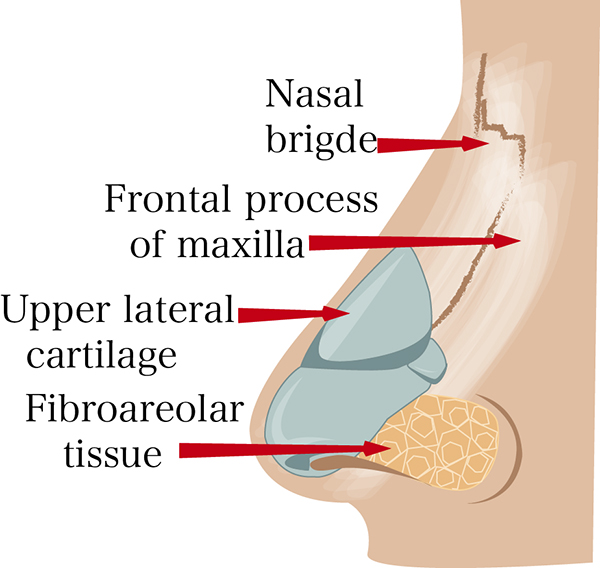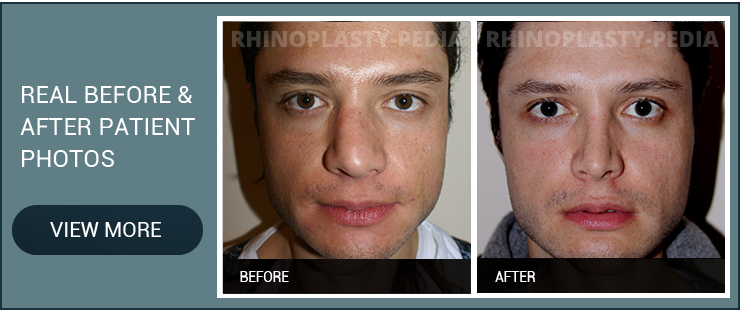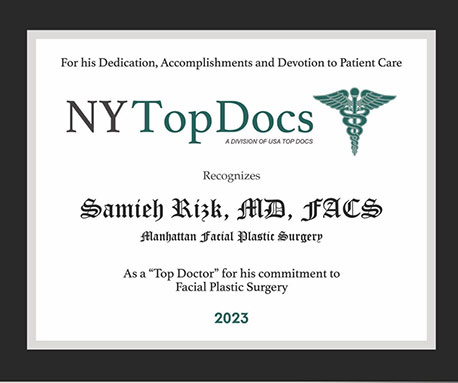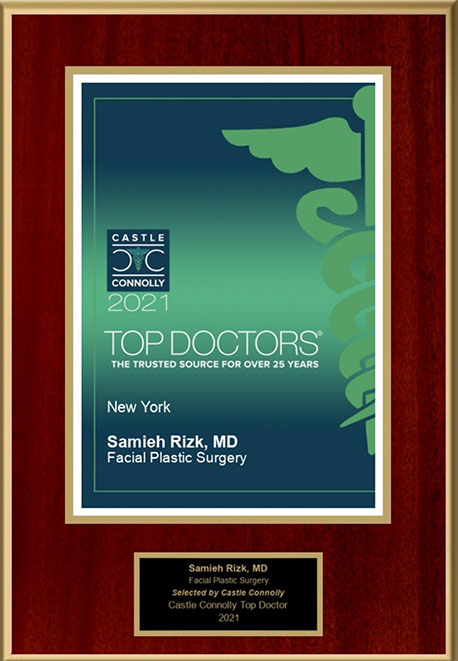Rhinoplasty for Nasal Reconstruction/Cancer

Those afflicted with skin cancer of the nose often undergo an advanced procedure called Mohs micrographic surgery — also known simply as Mohs surgery — to remove the cancerous tissue. In many cases, this is followed by reconstructive/cosmetic rhinoplasty to restore the nose to its previous shape – or even improve upon the former shape.
Indications for Skin Cancer and Mohs Surgery
Named after its inventor, Dr. Frederic Mohs, Mohs micrographic surgery is typically used on complex tumors, such as squamous and basal cell carcinomas. Sometimes, Mohs surgery is used to treat rare tumors, such as superficial melanomas.
Skin cancer is considered complex under the following circumstances:
- It is located in an area where it is necessary to preserve healthy tissue in order to achieve an optimal functional and cosmetic outcome; for example the nose, eyelids, lips ears, or hands
- It is located in an area where tumor recurrence is more likely; for example the lips, ears, eyelids, temples or nose
- It was not treated completely — or was treated but has recurred
- It is large
- The surgeon(s) are unable to identify the tumor’s borders
- There is scar tissue near the cancer
- It has begun to grow in a location where radiation was previously applied
- The patient’s immune system is compromised; for example, if the patient has had an organ transplant, chronic lymphocytic leukemia or HIV infection
- The patient is predisposed to multiple skin cancers, such as occurs with xeroderma pigmentosa, basal cell nevus syndrome and other genetic syndromes
How the Treatment Is Performed
Mohs surgery involves the surgical removal of cancerous cells and the surrounding tissue, one layer at a time. The tissue is then evaluated to make sure all of the cancer cells have been successfully excised. If there are still cancer cells, an additional layer will be removed. This process continues until the surgeon reaches a layer that is cancer-free. Mohs is considered a highly effective procedure.
The Next Step: Reconstructive/Cosmetic Rhinoplasty
Following Mohs surgery many patients have a wound that must be repaired, and many also need to have their nose reshaped. Both of these require rhinoplasty, which is often performed the same day.
While Mohs surgery is typically performed by an experienced dermatologist, the subsequent rhinoplasty procedure should be performed by a board certified facial plastic surgeon.
Reconstructive rhinoplasty for nose cancer involves replacement of skin, cartilage, bone and other tissues. The patient’s own tissue is used if possible, in order to avoid potential rejection. If cartilage is removed during the Mohs portion of the surgery, a cartilage graft will be necessary. If scar tissue is present, then treatments such as laser resurfacing or dermabrasion may be employed to address it.
Although Mohs surgery is very effective, and the surgeon(s) will do everything possible to avoid disturbing tissue, in many cases the cancer has progressed such that it has caused facial disfigurement that requires reconstruction. This often involves rhinoplasty to restore the aesthetic appearance of the face, as well as scar revision.
In some cases patients wish to change the aesthetics of their nose; in these cases, combining reconstructive and cosmetic surgery can often be effective. To properly reshape the nose it may be necessary to start from scratch.

Cost and Insurance
Mohs surgery is usually considered medically necessary. Most insurance plans cover the procedure. That being said, it is always a good idea to contact your insurance carrier to confirm.
The cost of Mohs surgery varies depending on the geographic area, the surgeon and where the cancer is located on the body. The most important factors include the type of repairs that need to be made and how many layers are removed.
There are methods to treat skin cancer that cost less, but none of them is as effective as Mohs surgery. Mohs can also be the more cost-effective long-term, because it is associated with a lower recurrence rate.
Risks and Side Effects
As with any surgery, there are some risks associated with Mohs, including the following.
- Infection
- Pain or tenderness near the site of surgery
- Hematoma (bleeding into the wound)
- Bleeding from the wound
Your surgeon will most likely recommend that you take pain relievers following Mohs surgery and rhinoplasty to help control any discomfort or pain. Though rare, infection can usually be addressed with antibiotics.
Less-common complications include:
- Itching
- Shooting pain
- Numbness (temporary or permanent) near the surgical area, which sometimes occurs if nerve endings are disturbed or cut
- Weakness in the surgical area, which typically only occurs if the tumor is big and a muscle nerve is cut; this too may be temporary or permanent
- A large scar (keloid)








